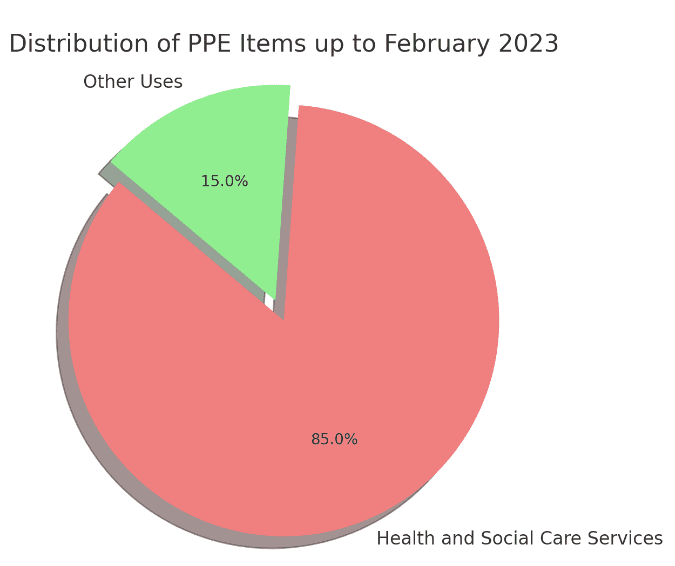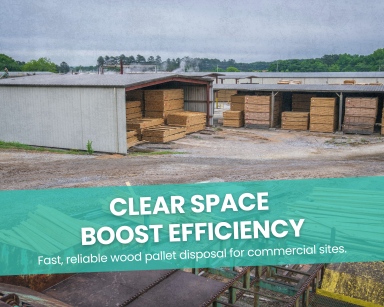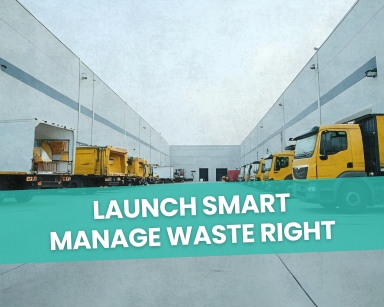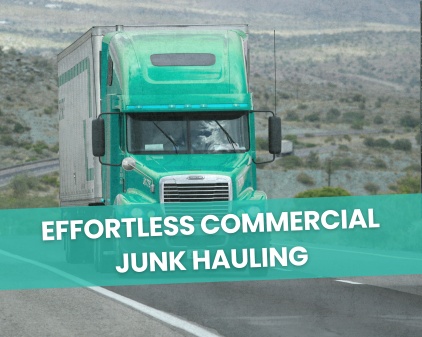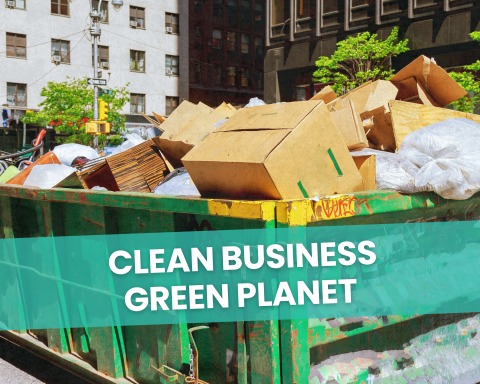PPE Disposal: From 50% Savings to a Greener Tomorrow
Since the time of COVID-19 pandemic, the world witnessed an unprecedented surge in the use of Personal Protective Equipment (PPE). While these items became essential tools in the fight against the virus, they also posed a new challenge: how to dispose of them responsibly. According to a recent report by GOV.UK, up to February 2023, a staggering 27.1 billion items of PPE were distributed, predominantly for health and social care services in England. With such vast quantities in circulation, the question of proper disposal becomes paramount. This article delves deep into the intricacies of PPE disposal, shedding light on lesser-known facts and offering sustainable solutions.
Table of Contents
What is Disposal in PPE? Unveiling the Hidden Layers
Personal Protective Equipment, commonly known as PPE, encompasses a range of items designed to protect individuals from various hazards in their work or daily environments. These include helmets, gloves, safety goggles, face masks, respirators, and protective clothing.
Given the surge in PPE usage during the pandemic, the challenge of personal protective equipment disposal has grown exponentially. Improper disposal can lead to environmental degradation and potential health risks.
What is a Disposal Process?
The disposal process for PPE, especially items like gloves and face shields, is a meticulous procedure designed to prevent contamination and safeguard public health. It involves:
- Segregation: Separate used PPE, like gloves, from general waste to prevent cross-contamination.
- Containment: Place used PPE in designated containers or bags to avoid leakage of contaminants.
- Transportation: Safely move contained PPE to disposal or recycling facilities, handling carefully to avoid contaminant release.
- Treatment or Disposal: Treat or recycle used PPE based on type and condition for safe disposal or reuse.
For instance, the disposal of gloves, especially in a healthcare context, must adhere to strict guidelines to prevent the spread of pathogens. Similarly, face shields, which may have been exposed to airborne particles, need to be disposed of in a manner that ensures any potential contaminants are contained.
What is the Correct Procedure for Disposal of PPE? A Guided Walkthrough
The correct procedure for PPE disposal varies based on the type of equipment and its usage. For instance, a face mask used in a healthcare setting might be contaminated with pathogens and would require a different disposal method than a mask used for dust protection in construction.
When Should We Remove PPE?
PPE should be removed and considered for disposal when:
- It becomes damaged, compromised, or functionally impaired, impacting its protective capabilities.
- It has been visibly soiled or contaminated with bodily fluids, chemicals, or other potentially hazardous substances.
- The task for which it was used has been completed to prevent cross-contamination between different activities or areas.
For example, in healthcare settings, gloves should be removed and disposed of immediately after a procedure or patient care activity to prevent the transfer of microorganisms to other patients or environments.
How Long Does PPE Last For?
The longevity of PPE is contingent upon several factors, including the type of equipment, the manufacturer’s guidelines, and the conditions under which it is used and stored. For instance:
- Disposable gloves, often used in medical or cleaning tasks, are designed for single use and should be disposed of after each task.
- Face shields, if not visibly soiled or damaged, can often be reused if they are properly cleaned and disinfected between uses.
It’s imperative to adhere to guidelines provided by PPE manufacturers and regulatory bodies to ensure that the equipment maintains its protective properties for the duration of its intended use.
How Do You Dispose of PPE Properly? A Crucial Inquiry
Proper disposal of PPE is essential to prevent environmental contamination and protect public health. According to a study published on NCBI, the pandemic saw a significant increase in inappropriate disposal of PPE, with many items found in water resources.
What PPE is Required for Hazardous Waste?
Handling hazardous waste necessitates the use of specific PPE to shield individuals from potential exposure to harmful substances. This might include:
- Gloves: To protect the hands from direct contact with hazardous materials. The type of glove material (e.g., nitrile, latex) should be selected based on the nature of the hazardous substance.
- Eye Protection: Goggles or face shields to protect the eyes from splashes or sprays of hazardous substances.
- Respirators: To protect against inhalation of hazardous fumes, vapors, or particles.
- Gowns or Aprons: To safeguard the skin and prevent contamination of clothing.
You must exercise extra caution in disposing of chemotherapy PPE due to the cytotoxic nature of chemotherapy drugs, which can be harmful upon contact or inhalation
Why Should PPE be Disposed of Correctly?
The Guardian reported that people disposed of an estimated 3.14 billion items of PPE through various methods, including incineration and recycling.
- Environmental Protection: Incorrect disposal, especially of plastic-based PPE like gloves and face shields, can contribute to environmental pollution and harm ecosystems.
- Public Health: Improper disposal of PPE can become a public health hazard, especially if it contains harmful substances or pathogens.
- Regulatory Compliance: Adhering to guidelines for PPE disposal, especially in healthcare settings, is crucial to comply with local, state, and federal waste disposal regulations.
For instance, the disposal of PPE in healthcare often requires adherence to specific protocols to manage potentially infectious waste safely.
Which PPE Can Be Reused? Exploring Sustainable Options
Healthcare professionals do not design all PPE for single use. They can sanitize and reuse some items, like certain types of respirators and face shields.
How Do You Dispose of Sterile Gloves?
Sterile gloves, often utilized in medical and laboratory settings, require particular attention during disposal due to the potential for contamination. The general procedure involves:
- Removal: Carefully removing the gloves without touching the outer surface.
- Containment: Placing the used gloves in a designated waste container, often labeled as biohazard waste in healthcare settings.
- Disposal: Ensuring that the waste container is sealed and disposed of according to regulatory guidelines.
Proper disposal of contaminated gloves in healthcare is key to preventing infection spread.
How Are Gloves Recycled?
Recycling gloves involves a series of steps, including:
- Collection: Gathering used gloves, ensuring they are not contaminated with hazardous substances.
- Cleaning: Washing and sanitizing the gloves to remove contaminants.
- Processing: Breaking down the material and converting it into a form that can be used to manufacture new products.
- Manufacturing: Utilizing the recycled material to produce new items.
Certain programs and facilities specialize in recycling PPE. They turn used items like gloves into raw materials for new products, reducing waste and environmental impact.
Are Gloves Hazardous Waste? Unraveling the Truth
Not all gloves are considered hazardous waste. However, gloves used in handling toxic substances, like chemotherapy drugs, fall into this category and require specialized disposal.
How Do You Get Rid of Gloves?
The method for disposing of gloves depends on their use and potential contamination:
- General Use: Gloves used for everyday tasks can typically be thrown into regular trash bins.
- Medical or Hazardous Use: Dispose of gloves used in medical settings or exposed to hazardous substances in designated biohazard containers or hazardous waste bins.
When determining where to dispose of gloves, it’s essential to be aware of local regulations and guidelines, especially if used in specialized settings.
What is the Proper Way to Dispose PPE?
The proper way to dispose of PPE, including items like face shields, involves:
- Identification: Recognizing if the PPE is contaminated or can be reused.
- Segregation: Separating PPE waste from general waste to prevent cross-contamination.
- Containment: Placing PPE in designated containers or bags, especially if it’s contaminated.
- Disposal: For disposal, they must adhere to local regulations and guidelines, ensuring environmentally friendly treatment or disposal of items.
For instance, you should treat face shields used in medical settings as medical waste and adopt proper disposal methods for them.
How Do You Dispose of Face Masks? A Vital Exploration
With the widespread use of face masks during the pandemic, their disposal has become a significant concern. You should throw disposable masks in closed-lid trash bins to prevent contamination. In medical settings, you must treat masks as infectious waste and dispose of them in biohazard containers.
How Are Chemotherapy Wastes Disposed?
Face masks, especially disposable ones, have become ubiquitous due to the COVID-19 pandemic. Their disposal involves:
- General Use: If not visibly soiled, face masks can be thrown into regular trash bins.
- Medical Use: Medical masks exposed to contaminants should be disposed of in biohazard containers.
- Recycling: Some programs are emerging that recycle certain types of masks, turning them into raw materials for new products.
It’s crucial to be aware of local guidelines when determining how to dispose of face masks, especially given their widespread use in recent times.
How Do You Dispose of Chemo Gloves and Cytotoxic Sharps?
Chemotherapy wastes, due to their cytotoxic nature, require specialized disposal methods. This involves:
- Identification: Recognizing all items that have come into contact with chemotherapy drugs, including gloves, gowns, and sharps.
- Containment: Placing chemotherapy waste in designated cytotoxic waste containers, which are often yellow and labeled with a cytotoxic symbol.
- Storage: Storing the waste in a secure area until it can be collected for disposal.
- Disposal: Treating the waste using methods like incineration to ensure complete destruction of any residual cytotoxic drugs.
Adherence to strict guidelines is crucial when disposing of chemotherapy waste to prevent potential health risks.
What are the 4 Methods of Disposal? A Closer Look
The four primary methods of disposing ppe include recycling, landfills, composting, and incineration. Each method has its advantages and environmental impacts.
For instance, recycling reduces the need for raw materials, while composting turns organic waste into nutrient-rich compost. Incineration, on the other hand, involves burning waste to produce energy, but it can lead to air pollution.
Landfills are the most common method of waste disposal, but they can lead to soil and water contamination if not managed properly.
What is the Most Environmentally Friendly Way to Dispose of PPE?
Recycling and repurposing are the most environmentally friendly ways to dispose of PPE. Some companies have started programs to recycle PPE into new products, reducing the need for raw materials and minimizing environmental impact.
How Do You Dispose of PPE in Healthcare?
Healthcare professionals must follow PPE waste disposal guidelines for gloves contaminated with bodily fluids to prevent infection spread.
What are the Guidelines for PPE Disposal? A Comprehensive Guide
Guidelines for PPE disposal vary based on the type of equipment and its usage. For instance, the World Health Organization (WHO) and the Centers for Disease Control and Prevention (CDC) have provided guidelines on how to dispose of PPE used in healthcare settings during the COVID-19 pandemic.
These guidelines emphasize the importance of segregating waste, using designated disposal methods, and adhering to local regulations.
What are the PPE Disposal Guidelines for COVID-19?
During the COVID-19 pandemic, the disposal of PPE became a significant concern due to the vast quantities in use. The guidelines stress the importance of actively segregating PPE waste, using designated disposal methods, and treating contaminated PPE as infectious waste.
How Do You Dispose of a Face Shield?
You can sanitize and reuse face shields, like other PPE, if they are not damaged. However, if you need to dispose of them, place them in regular trash bins or, in medical settings, in biohazard containers.
The Happen Ventures Solution
In the wake of increased PPE usage post-COVID-19, the question of sustainable disposal methods has become critical, as traditional methods are no longer sufficient.
Happen Ventures presents an innovative solution for disposing of PPE, tackling environmental issues and benefiting communities in need.
- Assessment: We begin by understanding your company’s specific PPE disposal needs. This ensures a tailored strategy that aligns with your objectives and the type of PPE waste you generate.
- Collection: Our trained professionals actively collect PPE waste from your facility, handling each item with the utmost care and safety.
- Beneficial Reuse: Instead of directing PPE to landfills or recycling plants, we identify communities and organizations in need. Through our extensive network of partners, we ensure that items like gloves and face shields find a second life, serving those who might not have access to such essential resources.
- Environmental Impact: By adopting the beneficial reuse approach, we significantly reduce the environmental footprint. Fewer items end up in landfills, leading to decreased environmental degradation and pollution.
- Regulatory Compliance: Rest assured, our methods are fully compliant with existing regulations. We ensure that every step, from collection to redistribution, adheres to the highest industry standards.
- Enhanced Brand Reputation: By partnering with Happen Ventures, companies not only ensure efficient PPE disposal but also enhance their brand image. Demonstrating a commitment to community welfare and environmental sustainability can significantly boost a brand’s reputation and ESG score.
The Final Word
Improper handling of PPE poses environmental threats and wastes resources needed by communities. Traditional disposal methods, though somewhat effective, fail to fully address the complex issues of waste management in our evolving world.
Happen Ventures stands out as a beacon of innovation in this landscape. By championing the concept of “Beneficial Reuse,” we’re not just addressing the immediate challenges of PPE disposal but reshaping the narrative around it. Instead of viewing PPE as a problem, we see it as an opportunity.

